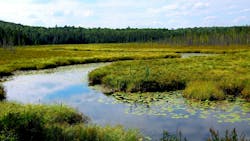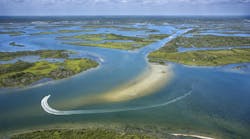U.S. EPA awards $2.4 million to mid-Atlantic states to support wetlands programs
The U.S. Environmental Protection Agency (EPA) announced on August 8, 2024, $2.4 million in funding for projects that will help protect, manage and restore wetlands in the mid-Atlantic region.
Recipients in Maryland, the District of Columbia, Delaware, Virginia and West Virginia were chosen for a Wetland Program Development Grant (WPDG) that helps states and Tribes develop and manage wetlands programs.
Wetlands offer critical habitat for fish, waterfowl and other wildlife and are a barrier to the destructive power of floods and storms.
Awarded every two years, WPDGs are used to build and refine comprehensive wetland programs, with priority given to funding projects that address monitoring and assessment, voluntary restoration and protection, regulatory approaches, or wetland-specific water quality standards.
Funded states and their projects can be found below:
- The District of Columbia’s Department of Energy and Environment (DCDOEE): $127,575 for the “Improving Wetland Restoration and Protection in DC through Enhanced Mapping, Outreach, and Regulatory Guidance” project.
- The Maryland Department of the Environment (MDE) $439,207 for the “Enhanced Environmental Screening, Review and Protection of High Quality Nontidal Wetland and Waters” project, and $449,295 for the “Tidal Living Shorelines and Shore Erosions Control Water Quality Improvements Models, Hazard Reduction, and Design Guidance.”
- The University of Delaware (UD): $319,382 for the “Is Climate Change and Road Salt Salinization Undermining Nitrogen Removal by Freshwater Urban/Suburban Wetlands?” project.
- The Virginia Department of Environmental Quality (VADEQ): $525,147 for the “Enhancing Wetland Management in Virginia: Tools and Community Engagement” project.
- The Virginia Institute of Marine Sciences (VIMS): $224,491 for the “Resilient Wetlands: Science to Enhance Understanding and Support Decision Making” project.
- The West Virginia Department of Environmental Protection (WVDEP): $314,903 for the “Building Increased Capacity for Wetland Conservation in West Virginia” project.


